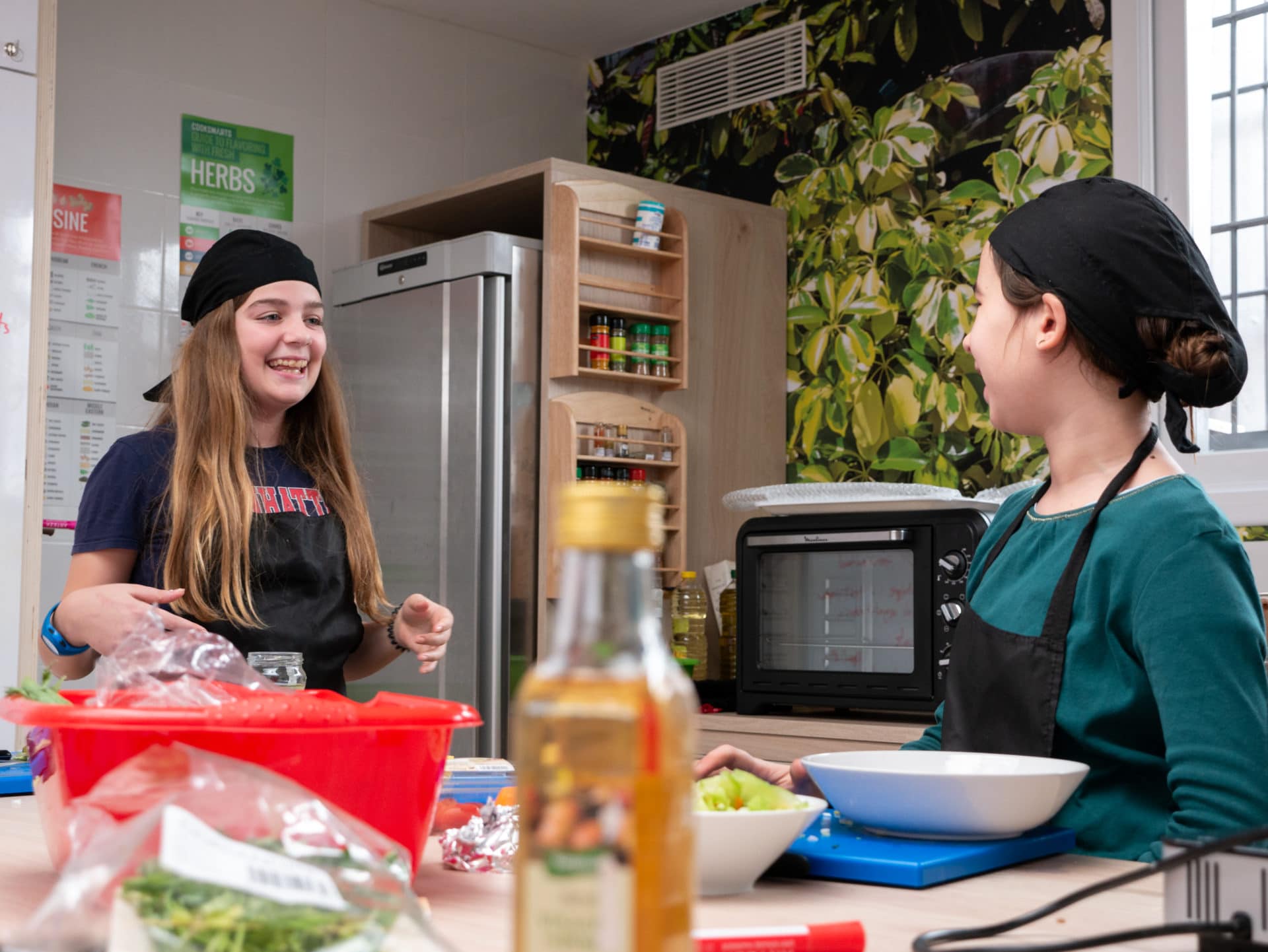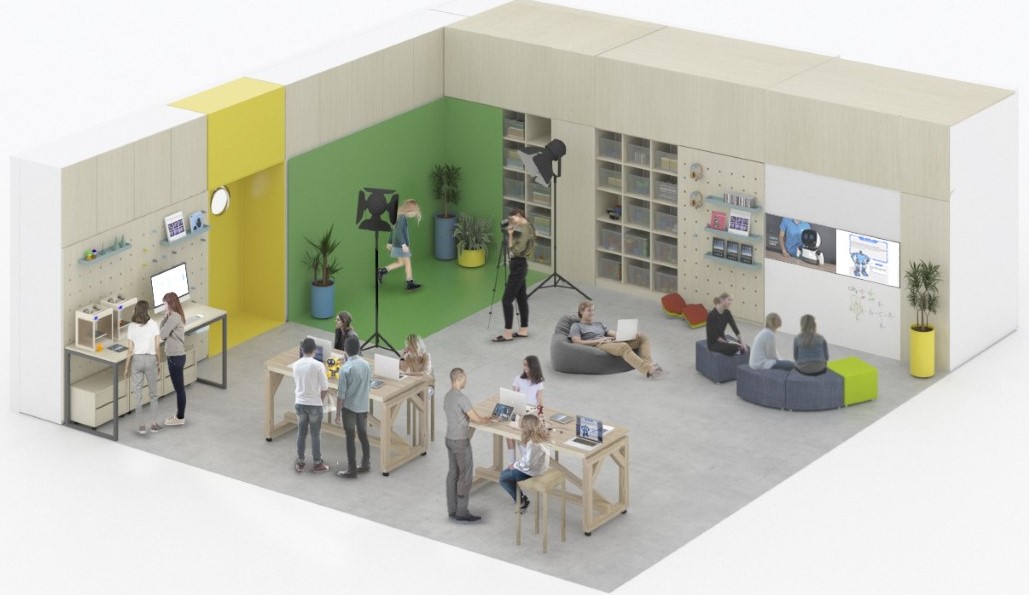
Hublings
Student-directed learning spaces
Learnlife’s Ulrike Suwwan makes a strong case for incorporating ‘Hublings’ – flexible spaces for self-directed learning – into the design of any school.
A familiar feeling?
Have you ever visited a friend at home, and found that every chair in their lounge faces the television? Even when the device itself is off, the most comfortable way to sit is looking straight at it. You may be there for a conversation and a catch up, but it is clear what the priorities were when the furniture was purchased and arranged. It’s not that you can’t have a chat in that room, but it’s just awkward and unnatural.
The same old feeling in a school

Same old, same old . . . .
Walking into a traditional classroom can have much the same effect. The chairs are quite likely facing the whiteboard or projector to facilitate structured enquiry. They might even be clustered in groups around tables and edging towards a suggestion of guided enquiry, but you are definitely not in the driving seat.
Compromise solutions
Sure, you could drag one of those chairs into the corner to have a quiet moment of reflection, or rearrange the tables to get closer to your group for some in-depth project work, but it is clearly not encouraged. The chairs scrape along the floor, and there is a whole lot of other stuff in the way.
In neither of these scenarios are you the protagonist. Deviation from the design priorities in either scenario is possible, but uncomfortable. This is because neither of these scenarios support free enquiry, and that is the space where the magic really happens.
Going further for free enquiry
Naturally, we need to feel comfortable in our environments, and a great deal of research has gone into showing the impact of lighting, acoustics, colours etc. on our general wellbeing and readiness to learn. But let’s go further. What if we weren’t only tinkering at the edges with LED lighting and acoustic absorbing partitions?
A truly inspiring learning environment is completely different, and so the space it inhabits must be radically different too. What kind of space can support such diverse elements as iteration, collaboration, discovery, playing, problem solving, reflection, hacking and making?
The only possible answer is one in which the room is flexible in its response to learner agency. Perhaps JK Rowling was onto something with the Room of Requirement which always came equipped for the seeker’s purpose and was, quite frankly, where most of the self-determined passion-based learning happened.
Hublings

. . . . but there are real alternatives.
At Learnlife, an organisation which advocates radical approaches to pedagogy and facilities designed for learning, we have long been interested in such spaces. We can’t call it ‘a room of requirement’ of course, as the lawsuit would be ruinous. We have seen the term makerspace, which is great, but doesn’t quite capture the wider wealth of possibility. We have also seen the term future rooms but we would rather they were actually more commonplace in the present.
That is why we called them Hublings. They are small flexible spaces (hence the ling) which differ from their immediate environment, but they are also connected to something else (hence the hub). So what do they connect to? We’ll get to that.
Where we can all agree
Whether we stop short at learner-centered education or, as we would encourage everyone to do, move towards the creation of learner-directed education, we are confident that we at least all agree that learner voice and choice has a powerful impact on their development.
The wider system that still supports standardized testing and top-down curriculum design is not going to change overnight. That means that physical learning environments in traditional schools are not going to become radically different anytime soon either.
A solution for today

A blank 60m2 canvas – something you will find in any virtually any school.
Hublings are the solution for today’s reality and a window into how we hope things might be tomorrow. They are learning innovation hubs which can be seeded in the centre of any school, and will grow the plants of free enquiry in any learner. In converting a simple 60m2 classroom into a creative multi-purpose studio, a school has a space where learners truly are in the driving seat.
Versatiity

Hublings are versatile, adaptive, with very little fixed down and static. From media production and 3D printing to hands-on carpentry and food science – all of this is possible when you open up the space and allow room for discovery and experience, with moveable furniture that suits whichever needs learners could possibly have.

The design is far from static either. Everything is co-created with schools to suit the needs of their learning community, including whether that community need is focused on digital technology to support the existing curriculum, after school clubs, teacher training or even community programmes.
The hub part
Ah yes, the Hub part. Aware as we are that so many “solutions” and “innovations” are simply thrown at a school in the hope that they stick, we have designed the Hubling project to provide an ongoing network of support.
By this we mean that after the initial teacher training on maximising the impact of the Hubling, schools will become part of a wide network of peers and thought-leaders who are sharing in the experience. Connection, community, hub.
It is all very well for those of us championing a new learning paradigm to show what it can achieve and share in the journey with our community in the hope that others will join us. Some things, however, must be experienced first-hand, and this is how it can happen and, we hope, ripple outwards as the results and the learners speak for themselves.
Oh, and learners are all the people in a learning community – young learners, teachers, leadership, administration, parents, boards and the wider community!
The space comes first

We can talk about failing forward, learner agency, learning through play and reflection and a million other empirically sound methodologies and approaches, but firstly the space itself must be of the richest soil. After all, where else would we grow our future together?

Ulrike Suwwan is Chief Impact Officer for Learnhubs at Learnlife, where she is responsible for co-creating and implementing Learnlife’s vision and mission through Learnhubs, Learnlife’s alternative to traditional schools. Over the last 25 years, she has supported the launch and organisation of over 40 schools, designing a wide range of new educational settings.
If you interested in learning more about Learnlife partner hubs and Hublings please write to partnerhubs@learnlife.com
You may also like
https://consiliumeducation.com/itm/2020/11/19/leader-of-the-revolution/
– a profile of Christopher Pommerening, co-founder of Learnlife.
FEATURE & SUPPORT IMAGES: with kind permission from Learnlife



